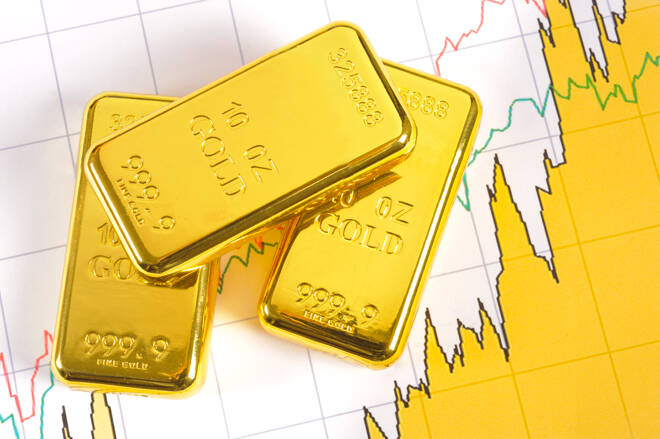Advertisement
Advertisement
Investors Are Worried About the Fed and Heightened Tensions in Ukraine
By:
The details will be made much clearer to us tomorrow when the Federal Reserve convenes its FOMC meeting, releases its updated monetary policy statement and Chairman Powell holds a press conference.
Although market participants anticipate the certainty of a series of interest rate hikes, the Fed’s completion of their tapering of monthly asset purchases, there is still concern about the Federal Reserve’s plan to reduce inflationary pressures by tightening its monetary policy. However, questions remain about how hawkish or aggressive their updated monetary policy will be.
In other words, the devil is in the details, and the details will be made much clearer to us tomorrow when the Federal Reserve convenes its FOMC meeting, releases its updated monetary policy statement and Chairman Powell holds a press conference. The statement, as well as a press conference, could reveal the Fed’s plans to reduce their asset sheet, which is approaching $9 trillion. It will also confirm if the tapering process in November will conclude as expected in mid-March. Most importantly, market participants will understand how quickly the Fed intends to raise rates over the next two years.
There is also real concern over the increased tensions regarding Russia’s buildup of troops and equipment on their border with Ukraine and potential responses by the United States and NATO.
In March and April 2021, Russia moved about 100,000 soldiers and military equipment near its border with Ukraine. According to Wikipedia, “This move represents the highest force mobilization since the country’s annexation of Crimea in 2014. This precipitated an international crisis and generated concerns over a potential invasion. Satellite imagery showed movements of armor, missiles, and other heavy weaponry. The troops were partially removed by June. The crisis was renewed in October and November 2021, when more than 100,000 Russian troops were again massed near the border by December.”
While Russia has not invaded any Ukraine territory, the potential of an invasion has resulted in a response by NATO and the United States. NATO has sent ships and fighter jets to Eastern Europe.
According to Reuters, “NATO said on Monday it was putting forces on standby and reinforcing eastern Europe with more ships and fighter jets, in what Russia denounced as Western “hysteria” in response to its buildup of troops on the Ukraine border.” Reuters also reported yesterday that the United States put 8,500 troops on heightened alert and awaiting orders to deploy to the region should Russia invade Ukraine.
Collectively these concerns have been highly supportive of gold, taking gold to the highest level since the middle of November. After trading to a double bottom on December 15 (which matches the lows of November 3), gold has moved up substantially. Interestingly, both lows of approximately $1760 occurred on the concluding day of the Federal Reserve meeting for November and December. Since the December low, we have seen gold move from a low of $1752 to today’s intraday high of $1854.20, just over a $100 move.
As of 4:30 PM EST gold futures basis the most active April 2022 contract has backed off of the lows seen today and is currently fixed at $1848.30 after factoring in today’s gain of $6.60. Mild headwinds from dollar strength did not have any substantial effect on gold today.
Our technical studies confirm that gold’s high came in slightly above the first level of resistance that we have identified which occurs at $1851. This resistance level is based upon the 23.6% Fibonacci retracement from a data set (data set one) beginning on November 3 with gold at $1750 and concluding on November 16 when gold reached a high of $1879.60.
Should this resistance level be taken out the next resistance level occurs between $1867.50, which is based upon a 78% Fibonacci retracement from data set (data set 2) that begins in June with gold at $1920 and concludes in August when gold reached the low of $1678. Above that is major resistance at $1880, based on the current top that occurred on November 16.
Our studies also indicate that the first level of support occurs at $1828 based upon a combination of both data sets. The 61.8% Fibonacci retracement from data set 2 occurs at $1867, followed by the 38.2% Fibonacci retracement from data set 1 which occurs at $1833.
Wishing you as always good trading and good health,
For those who would like more information simply use this link.
Gary S. Wagner
About the Author
Gary S.Wagnercontributor
Gary S. Wagner has been a technical market analyst for 35 years. A frequent contributor to STOCKS & COMMODITIES Magazine, he has also written for Futures Magazine as well as Barron’s. He is the executive producer of "The Gold Forecast," a daily video newsletter. He writes a daily column “Hawaii 6.0” for Kitco News
Advertisement
